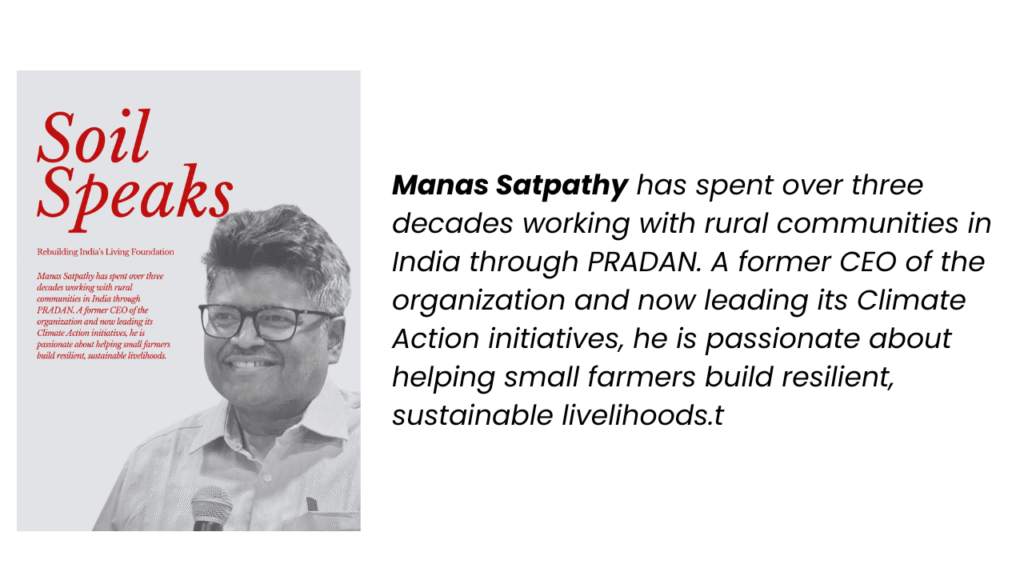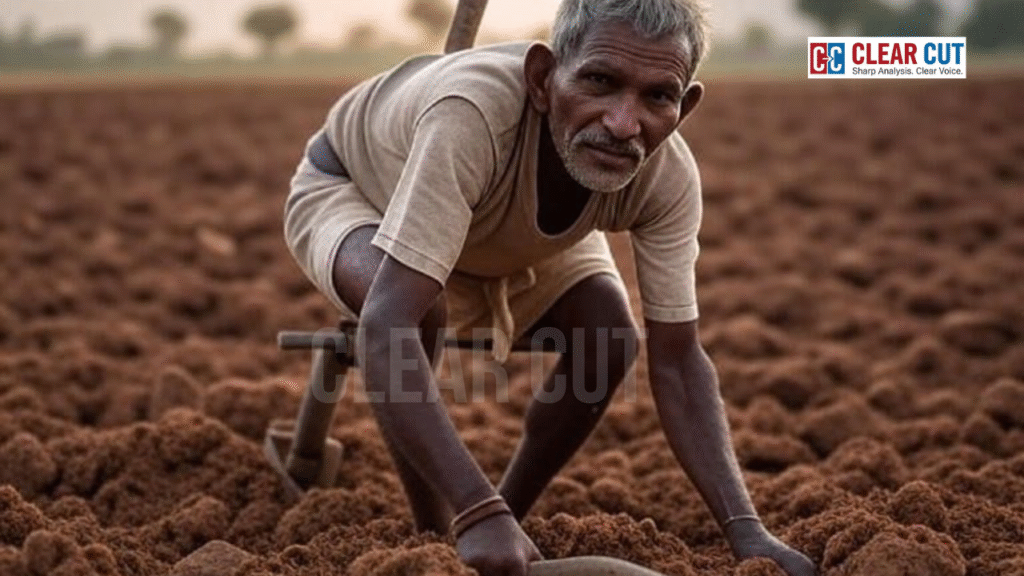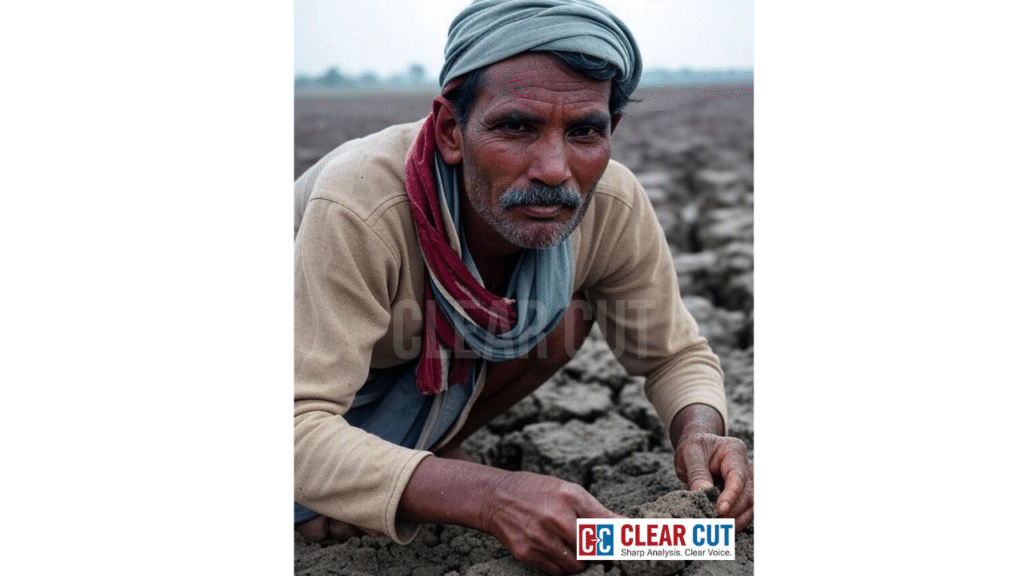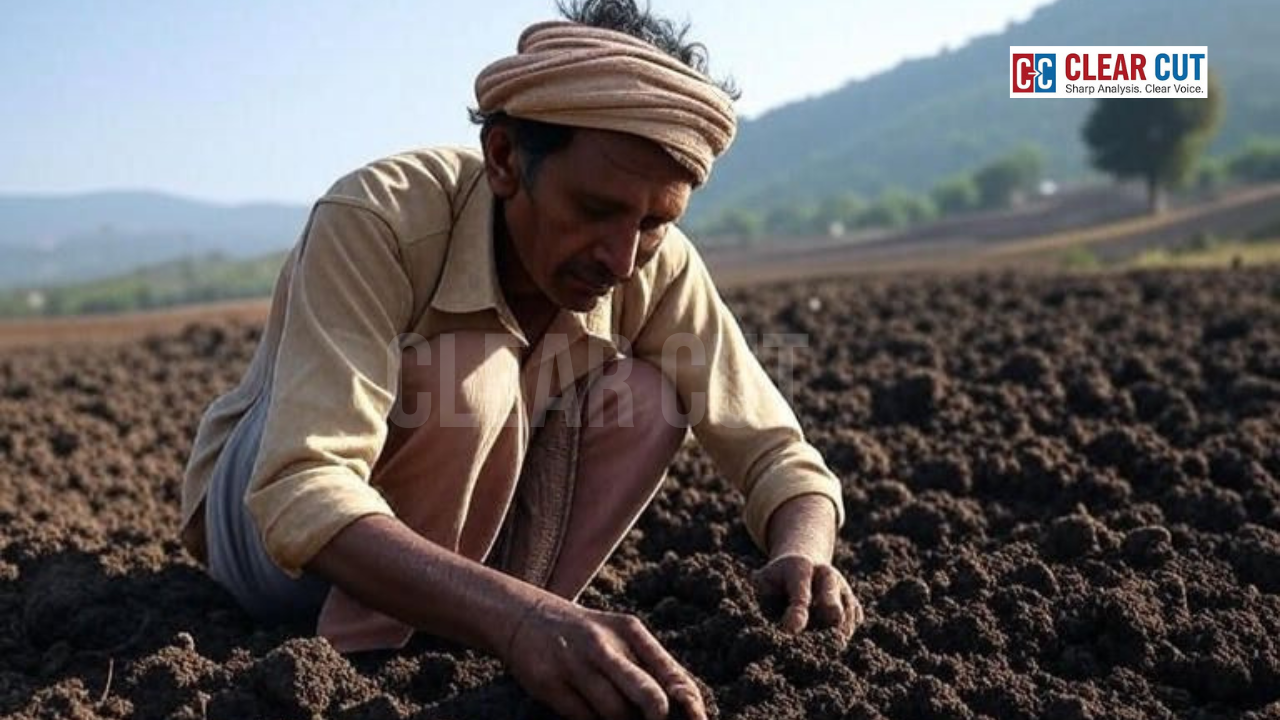Photo Credit: Ankita Shah
Clear Cut Livelihood Desk
New Delhi, UPDATED: Sep 01, 2025 01:56 IST
Written By: Manas Satpathy
On a hot afternoon in Jharkhand, an adivasi farmer digs into his field and lifts a handful of soil. What should crumble like moist bread instead sifts through her fingers as dry dust. “This land once fed us without asking for much,” she says, “now it asks for everything and gives back less each year.” Her story is not her alone, it is India’s story.
Soil is the quiet engine of our food system. It is where seeds sprout, roots anchor and nutrients cycle. But we have treated this living ecosystem as a lifeless substrate, pushing it with chemicals and pulling water from beneath it as if the supply were infinite. The result: India’s soils are in decline and with them, the livelihoods of millions who depend on farming.

The data is sobering. Soil Organic Carbon, which gives soil its fertility and vitality, has plummeted from about 1% to 0.3% over the last seven decades. That collapse means our soils hold less water, support fewer microorganisms and release nutrients poorly. In parallel, relentless use of nitrogen fertilizers has skewed pH balances and damaged microbial life, while pesticides linger long after harvest, hardening the soil and wiping out biodiversity.
The water beneath us tells the same story. India is the world’s largest extractor of groundwater and nearly 90% of it is swallowed by agriculture. According to the Central Ground Water Board, 17% of blocks are already over-exploited, 5% are critical and 14% semi-critical. Over-extraction does not just threaten water availability; it also alters soil quality, often pushing it toward salinity and collapse. The farmer responds by buying more inputs, digging deeper wells and slipping further into debt. This is not sustainability; it is slow erosion of the very foundation of farming.

Photo Credit: Ankita Shah
Yet soil is resilient if we allow it to heal. Regenerative agriculture offers a way forward. Its philosophy is simple: soil is alive and must be cared for as such. Practices such as keeping soil covered with crops, maintaining living roots throughout the year, diversifying plant species, integrating livestock and building organic matter all work together to restore life below ground. These methods do not just preserve soil; they improve it. Science confirms that regenerative practices rebuild carbon, increase water retention and cut input costs, all while sustaining or even enhancing yields.
For the past four decades, PRADAN has worked with smallholder farmers in central India’s tribal and rainfed regions. Over the past few years, it has been actively translating these principles into practice. We have seen the change first-hand. Farmers treating seeds with beneficial microbes, using organic bio-stimulants and cycling nutrients naturally have begun to restore their soils. Over 170 bio-input resource centres, managed by entrepreneurs and farmer-producer organizations, now serve more than two lakh farmers. The outcomes are striking: healthier soils, better tasting produce with longer shelf life and reduced costs of cultivation. Regenerative agriculture, unlike conventional methods, strengthens both the land and the livelihood.

Photo Credit: Ankita Shah
The impact extends beyond the farm. Local enterprises producing bio-inputs generate new jobs and reduce dependency on external chemical markets. Agroforestry, paddy-gram relay cropping and multilayer farming models are showing that ecological practices can also be economically rewarding. Farmers themselves say it best: when they co-create and adapt technologies to their conditions, they not only adopt them, they own them.
But this transformation cannot rest solely on the shoulders of smallholders. Policy, markets and institutions must align to make soil health a national priority. Governments need to shift subsidies and incentives toward practices that build rather than erode natural capital. Research institutions must refine regenerative methods for India’s diverse agro-ecologies. Corporates must develop value chains that reward ecologically grown produce. And civil society must keep building bridges between knowledge and practice at the village level.
For too long, soil has absorbed our excesses in silence. But today, the silence is breaking in falling yields, rising costs and farmer distress. This is soil speaking back to us. The question is whether we will listen. If we act with courage and collaboration, we can pass on to our children not lifeless dust but soils teeming with life; rich, fertile and capable of nourishing generations to come. To rebuild our soils is to rebuild India’s future. The soil is speaking. The time to answer is now.




